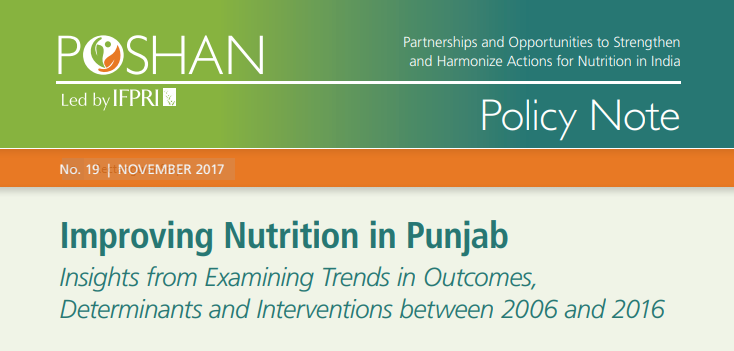Punjab, situated in the north-western plains of India, accounts for 1.5 percent of the area of the country and includes 22 districts (Government of Punjab 2017). The state is home to more than 27 million people (2.3 percent of the population of India) of which 75.8 percent are literate (Census of India 2011). Punjab has a sex ratio of 895 females per 1,000 males (Census of India 2011). The state, largely agricultural, contributes to nearly two thirds of the total production of food grains and a third of the total production of milk in the country (Government of Punjab 2017). The per capita income in Punjab is twice the national average (Government of Punjab 2017).
The purpose of this Policy Note is to examine the trends in undernutrition in Punjab and to document trends and geographic variability in the major determinants of nutrition and the coverage of key nutrition and health interventions. In doing this analysis, we aim to highlight the key areas of action to improve nutrition in Punjab.



